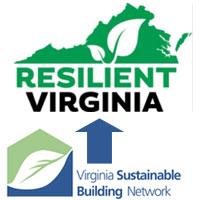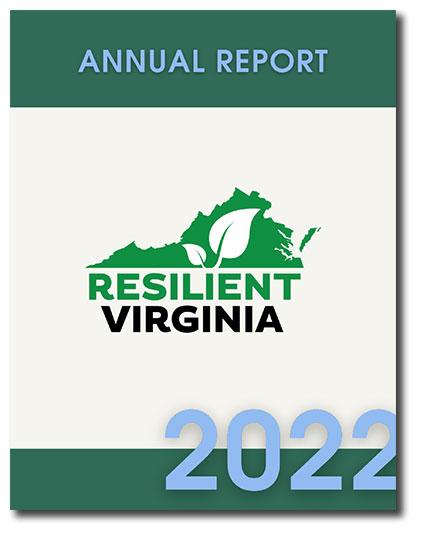
Resilient Virginia was formed to build on the successes of our founding organization, Virginia Sustainable Building Network (VSBN), which carried out green building and sustainable development educational activities from 1995 to 2013.
In 2014, the VSBN staff and Board of Directors decided to leverage the extensive experience and statewide networks of that organization to reformulate a new entity, Resilient Virginia, to facilitate a wider mission of accelerating resiliency planning across the Commonwealth.
Our Vision
Virginia communities adapt to climate, environmental, social and economic challenges to become more resilient, healthy, and safe places to live, work, and prosper.
Our Mission
To accelerate resiliency planning in communities across the Commonwealth.
Our Goals
To inform diverse community representatives around the Commonwealth about natural, climate-related, and man-made challenges; to educate key groups about models for community resiliency planning; and to activate these communities to engage in resiliency plan development.
Our Values
- Resilient Virginia supports the concept that healthy, equitable, economically sound communities are the building blocks for a strong, resilient statewide economy.
- Resilient Virginia supports the idea that an informed and aware public is the best foundation through which to build societal resilience.
- Resilient Virginia recognizes that environmental resources provide the natural capital that is the critical foundation for our communities’ successful functioning.
- Resilient Virginia sees innovation, diversity, and system redundancy as means to greater adaptive capability and risk minimization when facing natural and man-made challenges, whether extreme events or ongoing stressors.
What Resilient Virginia Offers
To inform, educate, and activate critical constituencies, Resilient Virginia provides:- A Resource Hub for information on capacity-building tools and resources that assist communities in dealing with:
- Climate change impact
- Environmental hazards
- Energy, water, and food security
- Societal and economic stressors
- Health and social equity
- Security threats.
- Workshops and training for local governments and community organizations, which provide technical knowledge aligned with state and federal-level policy priorities. Our Resiliency Academy series highlights resiliency planning “how-to’s” for local governments, disaster mitigation funding, economic impact and opportunities, resilient building and infrastructure design, and the role of ecosystems in community resilience.
- Statewide conferences, which report on progress, help define ongoing challenges, and propel implementation of policy agendas.
- Direct consulting services to jurisdictions and planning district commissions seeking assistance in resiliency planning and implementation.

